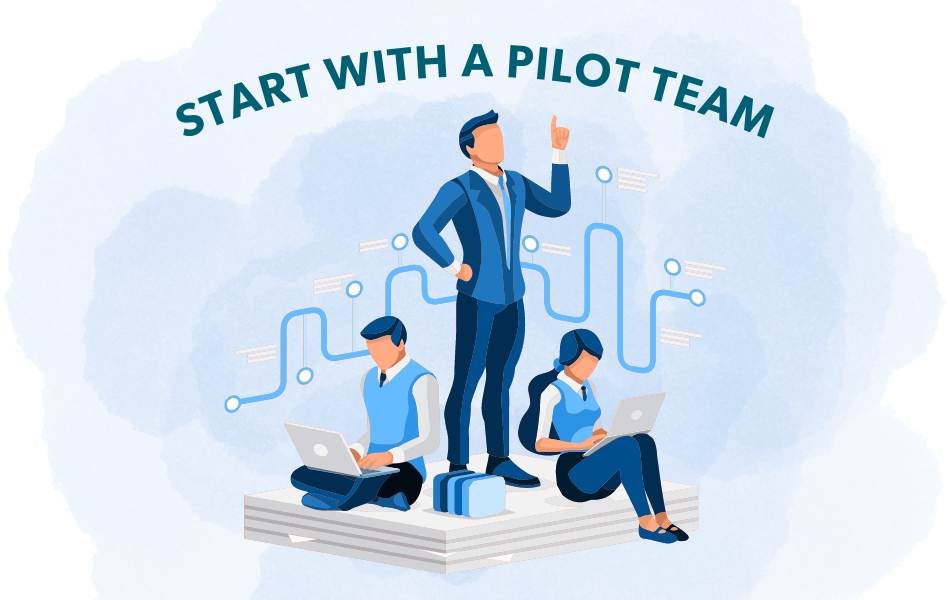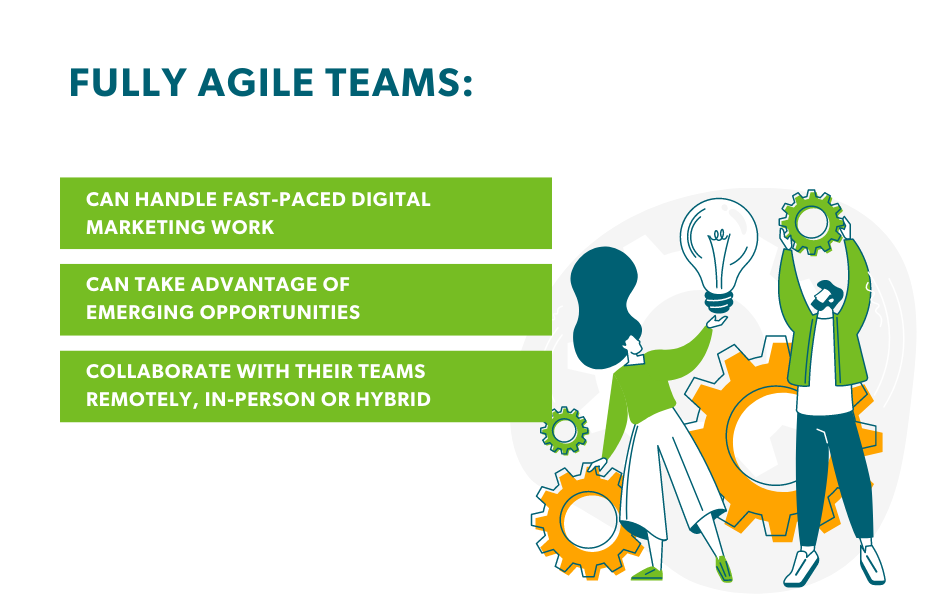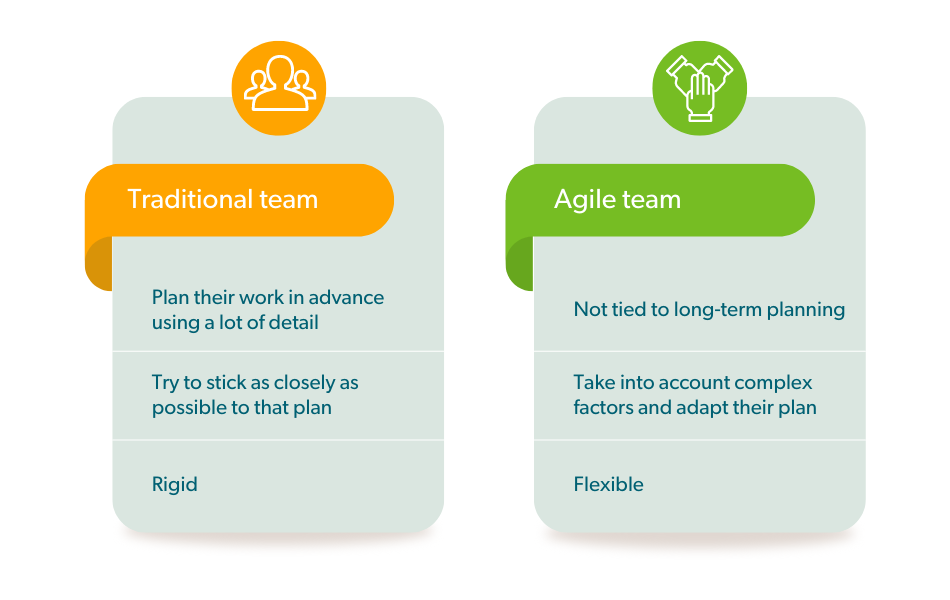This piece is republished from a Forbes Business Council post by Andrea Fryrear on Forbes.com.
The Pilot Approach

When taking the typical approach, a department or organization launches a pilot round of teams first. This way, you get the opportunity to see agility in action in the wild and learn about the nuances of its application and outcomes. No matter how many transformations you’ve seen, something out of the ordinary always seems to occur.
Based on the pilot outcomes, you’ll find yourself far better equipped to set up future teams, iterate on practices and adopt the appropriate tools and methods.
The Big Bang Transformation
Big bang transformations, on the other hand, take everyone agile at the same time—permanently, and all at once. This approach risks acting without evidence and making assumptions about people and teams, which can ultimately undermine the long-term success of agility. Reliable talent in these situations is often faced with burnout, infighting, and other frustrations.
The benefits of a pilot approach, as opposed to a big bang transformation, are well known in the agility community. But in this year’s State of Agile Marketing report, my team noticed an additional caveat to this model as a best practice.
Agility Is A Team Sport

We discovered that of our client base, the third of our partners who were fully agile—meaning 100% of their teams had adopted agile ways of working—reported enjoying much greater benefits than their partially agile counterparts, as their teams felt better connected to the overall structure of the company and a greater sense of ownership of their role.
Fully agile teams were the most likely of all survey respondents to say they felt their department could handle fast-paced digital marketing work, take advantage of emerging opportunities and collaborate with their teams regardless of whether their work was being done remotely, in-person or in a hybrid model.
These data seem to indicate that while pilots remain the current best model for starting an agile transformation, companies will maximize their chances of success by making a full switchover to agile as quickly as possible.
What Does It Mean To Be Fully Agile?
A fully agile marketing department means that every single team is an agile team, and there are none being run in the traditional waterfall style.
Practically speaking, this means that every individual team’s work is visualized in a workflow management tool of some kind, all teams employ some agile practices on a daily basis, and, typically, engagement with stakeholders and other teams has evolved to support agile processes.
Again, while only about a third of our clients’ teams had achieved full agility, over half said they had plans to get there eventually.
Benefits Of Full Marketing Agility
The transformation of an entire marketing department’s processes may seem like a tall order for those just getting started, but when you consider the data, the benefits of full agility are clear.

An individual team’s agility in our data was determined by their integration of at least some parts of an agile approach to manage their work. This could include daily standups, a backlog, sprints, kanban boards, etc. Agile teams have plans, but they’re flexible and can change frequently.
Traditional teams plan their work in advance using a lot of detail and try to stick as closely as possible to that plan. Agile teams use an ad hoc approach, taking into account a more complex profile of factors rather than feeling tied to long-term and potentially outdated plans. They work on what seems right from day to day and don’t have a well-defined process for managing incoming work.
What The Data Tells Us
Yes, transitioning from managing a few agile teams to an entire department’s worth can be a long and challenging road, but the data above paint a very clear picture of why it’s worth doing, as partially agile marketing departments were much closer in outcomes to those still working in traditional or ad hoc ways.
Adaptability, alignment with business objectives, and the ability to attack emerging opportunities—all of these were much more strongly correlated with full agility than partial implementations. If we want to see an impact from an Agile transformation, we need to plan to see it applied across an entire operation rather than just a few teams.
How To Achieve Full Agility
Of course, the big question is how to make this happen. The answer is not to fall back on a big bang transformation; you still need to start somewhere small. But even as you pilot, keep looking a few steps ahead on your agility journey. Be thinking about what team designs might make sense to follow your pilots. Consider setting up a transformation team to own the rollout and start developing long-term training plans to support teams for years, not just a few days. You won’t achieve full agility in a few months. This is a long-term commitment, and it should be resourced accordingly.
To see how ready you are for a potential transformation, get our Agile Marketing Transformation Checklist today!



